China Railway HighSpeedCRH
China Railway High-Speed (CRH) has two meanings: the technical standard of China High-Speed refers to the passenger dedicated line railway with 250 km/h (including reserved) and above trains and initial operation speed of not less than 200 km/h, which has been designed and operated by several new railways of the People's Republic of China with large speed increase; The construction of China's high-speed railway network refers to all new railway lines within the territory of the People's Republic of China with design speeds up to 200 km/h and some existing railway lines which have been renovated to meet the standards.
China's railways are divided into high-speed railways, fast railways and ordinary railways. China's high speed rail is rated as high iron grade, while the state railway grade I is only used for ordinary Railways of fast track and backbone line. By introducing and innovating, China has developed China Railway High-speed (abbreviated as China Railway High-speed) and "Renaissance" China Standard EMU trains.
In 2016, China's high-speed rail operation mileage exceeded 22 thousand km, accounting for 65% of the global high-speed rail operation mileage.
High-speed railway, referred to as high-speed railway, refers to the railway with high design speed of infrastructure and safe and high-speed running of trains on the track. The speed of trains is over 200 km/h.
High speed rail has different regulations in different countries, different times and different research fields. The State Railway Administration of China defines China's high-speed railway as a dedicated passenger train line with a designed operating speed of more than 250 kilometers per hour (including reservation) and an initial operating speed of more than 200 kilometers per hour, and promulgates the corresponding "Code for Design of High-speed Railway". The National Development and Reform Commission of China defines China's high-speed railway as a standard new line or existing line with a speed of 200 kilometers per hour or above, and promulgates the corresponding "Medium and Long-term Railway Network Planning" document, which unifies all track lines with a speed of 200 kilometers into the scope of China's high-speed railway network.
"High Speed Railway" is a misnomer in that it is referred to as the passenger train of China High Speed EMU (G-head train number) by the people and the ticket system of China Railway Corporation (12306 official website).
On December 1, 2017, the Code for English Translation and Writing in Public Service was formally implemented, which stipulates that the standard English name of high-speed EMU is G-Series High-Speed Train.
High speed railway is a railway system with high speed and high speed. The world's first formal high-speed railway system is Shinkansen, Japan, which was opened to traffic in 1964. Its design speed is 200 km/h. Therefore, the initial speed standard of high-speed railway is 200 km/h. Later, with the development of technology, the speed of trains is faster. In different times, different countries have different definitions of high-speed railway. According to their own conditions, they have stipulated their own detailed technical standards for the level of high-speed railway, involving different train speeds and types of railways.
In terms of speed, China Railway has three levels: high-speed railway (250-380), fast railway (160-250) and general-speed railway (80-160). In the 12th Five-Year Plan for Comprehensive Transport System, 2012, a special column on fast railway has been set up. In 2015, China Railway Corporation said that 19,000 kilometers of high-speed railway will be built at the end of the year, while 40,000 kilometers of high-speed railway network will be built. The number of kilometers is 120 thousand km, and the three data are different . All high-speed railways in China adopt high-speed rail, while high-speed railways mainly adopt medium-and high-standard Grade I, supplemented by low-standard high-speed railways. The high speed rail and the national railway grade I are located in the first two places in the railway rank (technical level) respectively. Among them, the high-speed rail grade is mainly used for the Eastern Railway Passenger trunk line and the inter-city railway of mega-city group; the first grade is mainly used for the eastern railway passenger and freight trunk line, the central and Western Railway Passenger trunk line and the inter-city railway of large and medium-sized city group. (Supplementary Note: The design speed of Grade I Passenger-Freight line or high-speed passenger dedicated line of the National Railway is just 250 km/h. It belongs to the fast railway in the speed classification, not to the high-speed railway. Because the train speed can not exceed the speed limit of the railway, otherwise there will be potential safety hazards such as derailment, so the speed index of 250 km/h grade railway for the normal operation of the train is 160 km/h to 250 km/h, not 250 km/h to 350 km/h. However, the premise of this classification method is only to divide the speed as the basis and not to involve other attributes. The passenger dedicated line of 250km/h is technically high speed rail and fast speed rail.
China's high speed railway generally adopts ballastless track, and a small number of ballasted tracks are used. China's high-speed rail lines operate at a unified speed of more than 200 km/h for EMU trains. There are three types of trains: G, D and C, and CRH and C R series.
At present, China's high-speed railway is limited to the national railway line. Although the design speed of Shanghai maglev track line is 430 km/h, which exceeds any national railway speed standard, it is not included in the category of conventional high-speed railway because it has no national railway nature, neither managed by the national railway department nor connected to the national railway network.
1. Coastal passage. Dalian (Dandong) - Qinhuangdao - Tianjin - Dongying - Weifang - Qingdao (Yantai) - Lianyungang - Yancheng - Nantong - Shanghai - Ningbo - Fuzhou - Xiamen - Zhanjiang - Beihai (Fangchenggang) high-speed railway (Qingdao - Yancheng section uses Qinglian and Lianyan railway, Nantong - Shanghai section uses Shanghai railway). It connects the eastern coastal areas and runs through the urban agglomerations of Beijing, Tianjin, Hebei, Central and South Liaoning, Shandong Peninsula, East Longhai, Yangtze River Delta, West Bank of the Strait, Pearl River Delta and Beibuwan Bay.
2. Beijing Shanghai channel. Beijing-Tianjin-Jinan-Nanjing-Shanghai (Hangzhou) high-speed railway, including Nanjing-Hangzhou, Bengbu-Hefei-Hangzhou high-speed railway, and through Beijing-Tianjin-Dongying-Weifang-Linyi-Huaian-Yangzhou-Nantong-Shanghai high-speed railway, links North China, East China and runs through Beijing-Tianjin-Hebei, Yangtze River Delta, etc. City group.
3. Beijing port (Taiwan) access. Beijing-Hengshui-Heze-Shangqiu-Fuyang-Hefei (Huanggang) -Jiujiang-Nanchang-Ganzhou-Shenzhen-Hong Kong (Jiulong) high-speed railway; the other branch line is Hefei-Fuzhou-Taipei high-speed railway, including Nanchang-Fuzhou (Putian) railway. It connects North China, Central China, East China and South China, and runs through Beijing, Tianjin and Hebei, the middle reaches of the Yangtze River, the West Bank of the Strait, the Pearl River Delta and other urban agglomerations.
4. Beijing Kazakhstan to Beijing, Hong Kong and Macao. Harbin-Changchun-Shenyang-Beijing-Shijiazhuang-Zhengzhou-Wuhan-Changsha-Guangzhou-Shenzhen-Hong Kong high-speed railway, including Guangzhou-Zhuhai-Macao high-speed railway. It connects the Northeast, North China, Central China, South China, Hong Kong and Macao, and runs through the urban agglomerations of Hachang, Central and South Liaoning, Beijing, Tianjin and Hebei, Central Plains, the middle reaches of the Yangtze River and the Pearl River Delta.
Fifth, the south channel. Huhhot-Datong-Taiyuan-Zhengzhou-Xiangyang-Changde-Yiyang-Shaoyang-Yongzhou-Guilin-Nanning High Speed Railway. It connects North China, Central China, Central China and South China, and runs through Hubao, Eyu, central Shanxi, Central China, the middle reaches of the Yangtze River, Beibuwan and other urban agglomerations.
The Beijing Kunming corridor. Beijing-Shijiazhuang-Taiyuan-Xi'an-Chengdu (Chongqing) -Kunming high-speed railway, including Beijing-Zhangjiakou-Datong-Taiyuan high-speed railway. It connects North China, Northwest China and Southwest China and runs through Beijing, Tianjin, Hebei, Taiyuan, Guanzhong Plain, Chengdu, Chongqing and Yunnan Medium-sized Urban Agglomeration.
Bag (silver) Haitong road. Baotou-Yan'an-Xi'an-Chongqing-Guiyang-Nanning-Zhanjiang-Haikou (Sanya) High-speed Railway, including Yinchuan-Xi'an and Hainan Ring Island High-speed Railway. It connects the northwest, southwest and South China, and runs through the urban agglomerations of Hubao-Er, Ningxia along the Yellow River, Guanzhong Plain, Chengdu-Chongqing, central Guizhou and Beibuwan.
Broad Lane (West). Lanzhou (Xining) - Chengdu (Chongqing) - Guiyang - Guangzhou high speed railway. Connecting the northwest, southwest and Southern China, through the Lanxi, Chengyu, Guizhou, Pearl River Delta and other urban agglomerations.
Eight transverse
(1) Sui man channel. From Suifenhe to Mudanjiang to Harbin to Qigihar to Hailar to Manchuria high-speed railway. Connecting Heilongjiang and eastern Mongolia.
2. Beijing Lanzhou corridor. From Beijing to Hohhot to Yinchuan to Lanzhou high speed railway. Connecting North China and Northwest China, through Beijing, Tianjin, Hebei, Hubao, Hubei, Ningxia, along the Yellow River, Lanxi and other urban agglomerations.
3. Green Silver passage. Qingdao-Jinan-Shijiazhuang-Taiyuan-Yinchuan High Speed Railway (in which the Suide-Yinchuan section uses the Taizhong-Yinchuan Railway). It connects East China, North China and Northwest China and runs through Shandong Peninsula, Beijing, Tianjin and Hebei, Taiyuan, Ningxia and other urban agglomerations along the Yellow River.
4. Land bridge passage. From Lianyungang to Xuzhou to Zhengzhou to Xi'an to Lanzhou to Xining to Urumqi high-speed railway. Connecting East China, Central China and Northwest China, it runs through such urban agglomerations as East Longhai, Central Plains, Guanzhong Plain, Lanxi and North Slope of Tianshan Mountains.
The channel along the Yangtze River. Shanghai-Nanjing-Hefei-Wuhan-Chongqing-Chengdu High Speed Railway, including Nanjing-Anqing-Jiujiang-Wuhan-Yichang-Chongqing, Wanzhou-Dazhou-Suining-Chengdu High Speed Railway (including Chengdu-Suining section), connects East China, Central China and Southwest China and runs through the Yangtze River Delta, the middle reaches of the Yangtze River and Chengdu. Chongqing and other urban agglomerations.
The Shanghai Kunming corridor. From Shanghai to Hangzhou to Nanchang to Changsha to Guiyang to Kunming high-speed railway. It connects East, Central and Southwest China and runs through the Yangtze River Delta, the middle reaches of the Yangtze River, Guizhou and Yunnan Medium-sized Urban Agglomerations.
The Xiamen and Chongqing channels. Xiamen-Longyan-Ganzhou-Changsha-Changde-Zhangjiajie-Qianjiang-Chongqing High Speed Railway (Xiamen-Ganzhou section uses Longxia Railway, Ganlong Railway, Changde-Qianjiang section uses Guizhou-Zhangzhou Railway). It connects the west coast of the Strait, the Central South and the southwest of the Strait, and runs through the west coast of the Strait, the middle reaches of the Yangtze River, Chengdu-Chongqing and other urban agglomerations.
Guang Kun pass. From Guangzhou to Nanning to Kunming high speed railway. It connects Southern China and southwest China through Pearl River Delta, Beibu Gulf and Yunnan middle cities.
The maximum speed of operation is 486.1 km.
On December 3, 2010, in the pilot joint commissioning and comprehensive test between Zaozhuang and Bengbu of Beijing-Shanghai high-speed railway, the maximum running speed of CRH380AL "Harmony" high-speed EMU reached 486.1 km. At that time, Liu Zhijun, Minister of Railway, and Zhang Shuguang, Chief Engineer of Railway, personally tried to ride in the cab and supervised the formation, demanding that the train driver rush to the limit speed and keep it for a long time.
Wheel rail test has the highest speed of 605 kilometers per hour.
In December 2011, a more high-speed test train developed by China Southern Railway, also known as the 500 km test train, was completed by Sifang Co., Ltd. of China Southern Railway, with a design speed of 500 km. The highest wheel-rail test speed of 605 km was created in the National Engineering Laboratory of High-speed Trains.
The world's highest grade high-speed rail Beijing-Shanghai high-speed railway
In June 2011, the Beijing-Shanghai high-speed railway was completed and put into operation, which is the longest and highest standard high-speed railway in the world. It runs through seven provinces and cities, including Beijing, Tianjin, Hebei, Shandong, Anhui, Jiangsu and Shanghai. It connects the Bohai Rim and the Yangtze River Delta with a total length of 1318 kilometers.
You know, the Beijing-Shanghai high-speed railway linking China's busiest cities is very popular, with over 100 million passengers in 2013. On July 1, 2014, on the third anniversary of its operation, the Beijing-Shanghai High-speed Railway announced its official profit. According to the business tax, it is expected to achieve a profit of about 1.2 billion yuan in the whole year.
The world's first new Alpine high speed railway -- Harbin high speed railway
On December 1, 2012, China's first and the first new high-speed railway in the world, Harbin-Dalian high-speed railway, was put into operation. Harbin-Dalian High-speed Railway has 921 kilometers of business mileage and 350 kilometers of design speed. It runs through Liaoning, Jilin and Heilongjiang provinces and has 23 stations on the whole line. According to the meteorological records of the last 30 years, the annual temperature difference in the three northeastern provinces has reached 80 C, which is the coldest and the largest temperature difference in China.
The longest mileage in the world and the highest speed rail in Beijing
In December 26, 2012, the high-speed railway with the longest mileage in the world opened and operated on the whole of Beijing Guangzhou high-speed rail. The Beijing-Guangzhou high-speed railway with a total length of 2298 kilometers is an important "one-longitudinal" of the "four vertical and four horizontal" high-speed railway in China's medium and long-term railway network planning. It starts in Beijing from the north and travels south to Guangzhou through Shijiazhuang, Zhengzhou, Wuhan and Changsha, with a designed speed of 350 kilometers per hour and an initial operation speed of 300 kilometers per hour. According to special analysis, the pulling effect of Beijing-Zhengzhou section of Beijing-Guangzhou high-speed railway on the whole social economy will reach 275.844 billion yuan by 2030 alone.
The most amazing high-speed rail traffic
In recent years, the high-speed rail has conquered many people's heart with convenience, speed and comfort. In Beijing, Tianjin, Beijing and Shanghai, Beijing and Guangzhou and other lines, high-speed rail also appeared "one ticket is hard to find". In 2014, more than 800 million people traveled by high-speed rail, the busiest of which was the Beijing-Shanghai high-speed railway, with more than 100 million people traveling on a single line.
Longest mileage
In 2014, Guiyang-Guangzhou, Shanghai-Kunming high-speed rail lines from Hangzhou to Nanchang, Changsha to Huaihua, Lanxin and other high-speed rail lines were opened one after another. By the end of 2014, China's railway business mileage reached 110,000 kilometers, including 16,000 kilometers of high-speed rail, more than half of the world's high-speed rail business mileage, is worthy of the world's first.
By the end of 2015, China's high-speed railway operation reached 19 thousand kilometers, ranking first in the world.
Wuhan Guangzhou high-speed rail officially operates at the fastest speed in the world.
In terms of the operation mode of the Wuhan-Guangzhou high-speed railway, the world's most advanced running mode of the local high-speed train at 350 kilometers per hour and the cross-line high-speed train at 250 kilometers per hour has also been developed for the first time. Zeng Xiaolin, Deputy Engineer of Wuhan-Guangzhou high-speed railway design, said this means that after the formation of China's high-speed railway network, all high-speed trains with 250 kilometers per hour can cross the railway line with 350 kilometers per hour. The Wuhan-Guangzhou passenger dedicated railway crossing Hubei, Hunan and Guangdong provinces, with a total length of 1068.6 kilometers, is the world's longest one-off construction mileage and the fastest operation speed of the railway. Zeng Xiaolin said that it took more than four years to build more than 1,000 kilometers of high-speed railway at one time, which is not only a milestone in the history of China's railway construction, but also a milestone in the history of world railway construction.
The highest speed of rendezvous in the world -- Zheng Xugao iron
On July 15, 2016, at 8:30 a.m., it represents the latest and highest achievement of China Standard EMU test task. A Chinese Standard EMU train started a new "test run" from Zhengzhou East Railway Station. This is a Chinese standard EMU with independent intellectual property rights designed and developed by our country. At 11:19, two EMUs meet at 420 kilometers per hour in Shangqiu Civil Rights County of Henan Province of Zhengzhou-Xuzhou High-speed Railway. A new world record of the speed of EMU convergence was born. The comprehensive test of China Standard EMU on Zhengzhou-Xuzhou High-speed Railway successfully acquired the data of energy consumption and vibration and noise characteristics of China Standard EMU, explored the changing law of key technical parameters of high-speed railway system with speed of 400 km/h or above, and deepened wheel-rail relationship, pantograph-catenary relationship and aerodynamics of China's high-speed railway. Mechanics and other theoretical research and high-speed railway core technology research and operation management provides strong technical support.
350 km per hour standard EMU Dalian Shenyang first operation
At 6:10 on August 15, 2016, the G8041 train sailed out of Dalian North Railway Station and went to the Shenyang Railway Station along the Harbin high speed rail. The reporter learned from China Railway Corporation that this is the first passenger-carrying operation of China Standard EMUs designed and developed by China and with comprehensive independent intellectual property rights.
The highest speed of Beijing Shenyang high-speed rail will exceed Beijing-Shanghai high-speed railway.
Recently, the first pole of catenary was erected between Fuxin North and Heishan North in Liaoning section of Beijing-Shenzhen High-speed Railway, marking the start of the post-four-power integration project of Beijing-Shenzhen High-speed Railway Station.
The Beijing Shenyang high-speed rail Liaoning section is 406.8 km long and the design speed is 350 km / h. The project includes full-line electric power, catenary, traction substation, Intelligent Disaster Prevention and safety monitoring, electromagnetic interference prevention, four-power house, etc. It is constructed by China Railway Electrification Bureau. According to the head of China Railway Electrification Bureau, Beijing-Shenzhen High-speed Railway will undertake many comprehensive tests, such as intelligent traction power supply system test, higher speed technical standard research, in order to improve the technical standard system of China High-speed Railway. The maximum test speed will exceed the 486.1 km speed record set by Beijing-Shanghai high-speed railway. The Beijing-Shenzhen high-speed railway is 709 kilometers long and is expected to open on June 30, 2019. By then, the time from Beijing to Shenyang by train will be shortened to 2.5 hours, and from Beijing to Harbin, the time will be shortened to about 4 hours.
Roadside prohibition
High-speed railway belongs to closed operation. In the safety protection zones on both sides of high-speed railway lines, except for necessary railway construction, operation and rescue activities, the following acts are strictly prohibited:
1. Burning waste, burning garbage and stocking livestock; 2. Discharging pollution and corrosive substances such as gas, solid, liquid, smoke, dust, dumping garbage, dregs and other substances that endanger the safety of high-speed railways into the high-speed railway line safety protection zones; 6. Unauthorized release of birds and aircraft that affect the safety of driving and the wind Flying or floating objects such as Zheng and Kongming lanterns; 7. Planting, planting trees, hanging, spraying, placing objects and other behaviors that may hinder the performance and safety of line equipment, high-voltage catenary, power line, signal and communication cable facilities in protected areas.
Why are burning and garbage burning on both sides prohibited? The train is equipped with a number of fault sensors and smoke alarms. Once the alarm is given, the train will slow down or even stop.
Kites and balloons are not allowed to fly in the area of 300 meters on both sides of the high-speed railway line, which will lead to short-circuit of the electric catenary.
Garage entry
The following acts that endanger the safety of high-speed railway stations and trains are forbidden to be carried out,and unauthorized access to important workplaces such as equipment management and train dispatching; carrying inflammable, explosive, corrosive and other items into the station and smoking on EMU trains.
Why is smoking prohibited? The train is equipped with multiple fault sensors and smoke detectors. Once someone smokes, the fire alarm system on the train will alarm, and the train will slow down or even stop. Therefore, it is not only in the EMU carriage that smoking is not allowed, but also in the carriage connection, toilet and toilet .
According to the Regulations on Railway Safety Management promulgated by the State Council on January 1, 2014, passengers smoking on EMU trains shall be ordered by the public security organs to make corrections, and individuals shall be fined not less than 500 yuan but not more than 2000 yuan. Later, the total iron regulations were stricter, and for a number of years it was forbidden to buy EMU tickets again.
China railway official website : https://www.12306.cn/
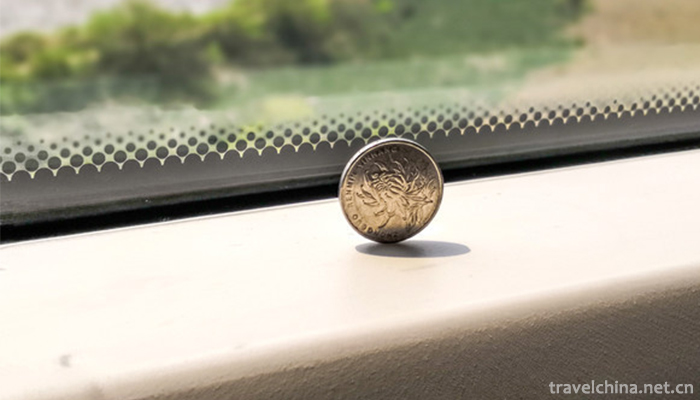

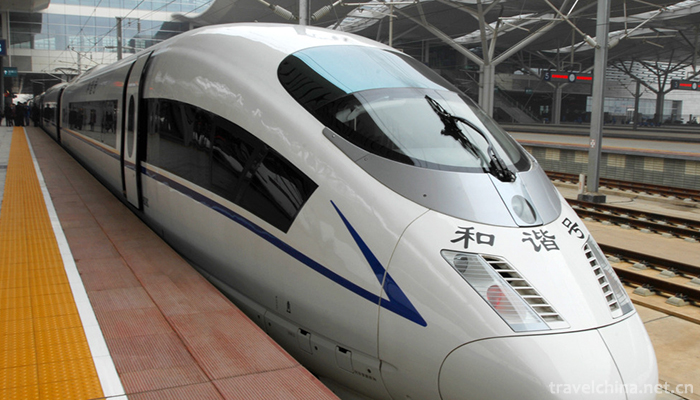
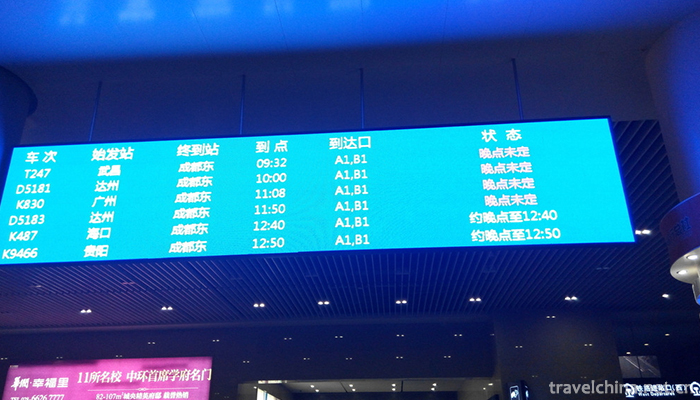
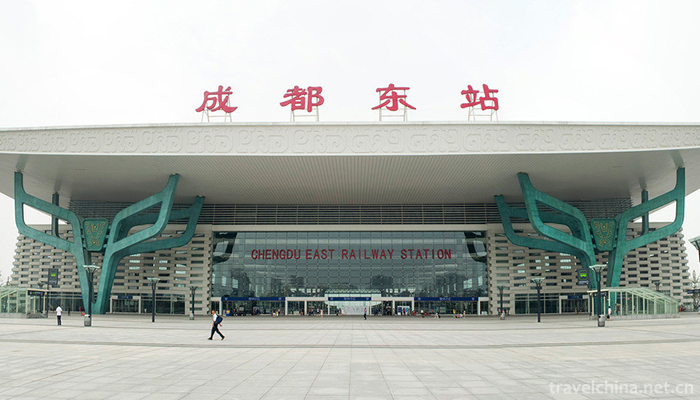
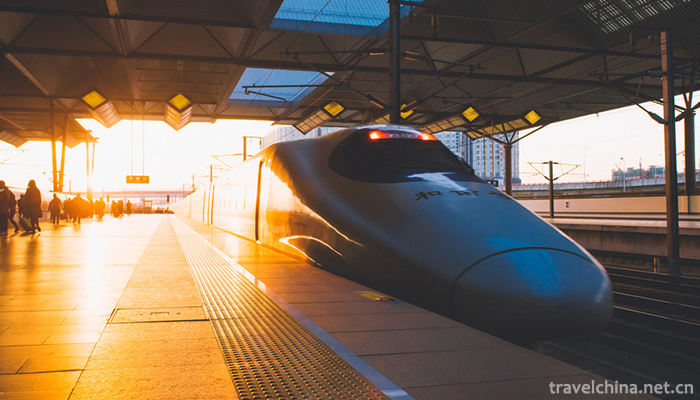

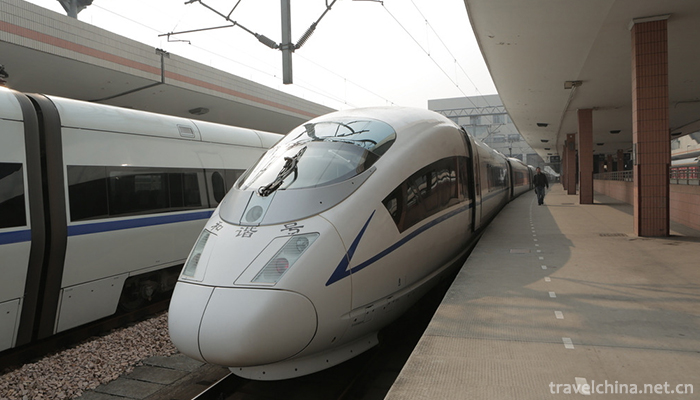
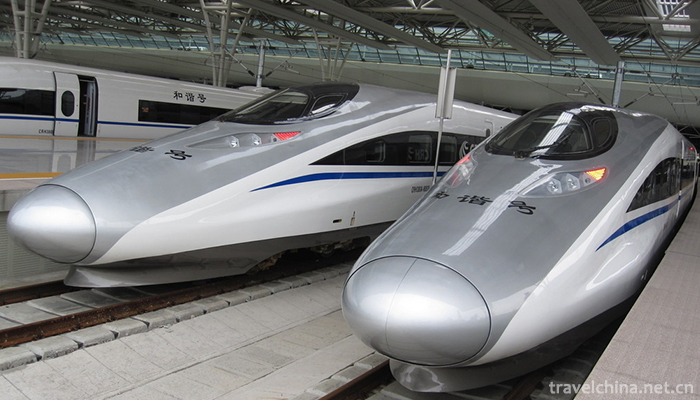
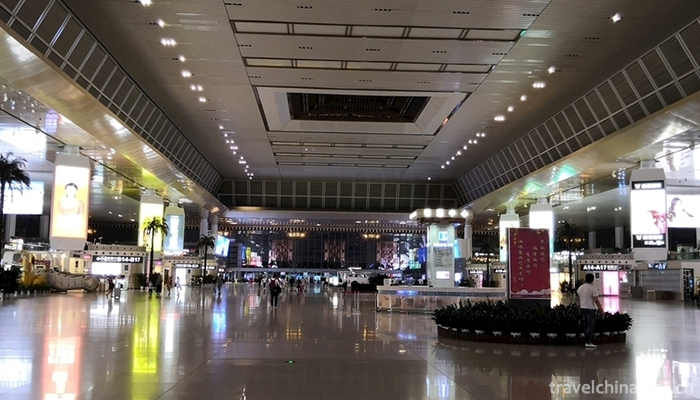
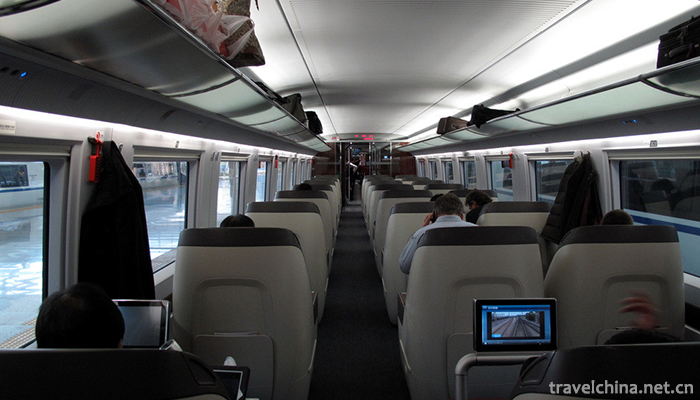
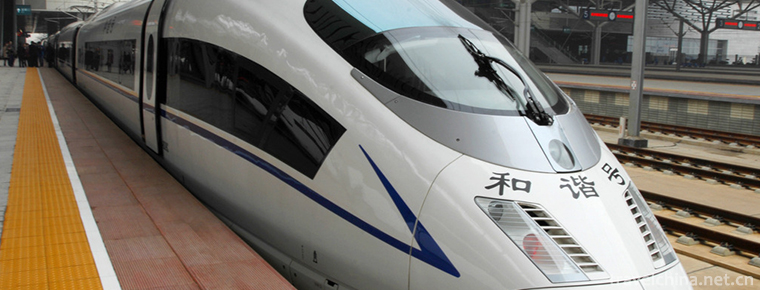
-
1.Huizhou stinky tofu
The common name of stinky tofu in Huizhou is "Big Dumb and stinky", which is a characteristic traditional snack in Huizhou, Anhui Province.
Time 2018-11-27 -
2.Taer Temple Scenic Area Xining City
Tar Temple, also known as Tar Temple, was founded in the 10th year of Hongwu Ming Dynasty (1377). Named after the Great Silver Pagoda built in memory of Zongkaba, the founder of the Yellow Religion
Time 2018-12-12 -
3.Ancient songs of Miao Nationality
Miao Ancient Songs, local traditional folk literature in Taijiang County and Huangping County of Guizhou Province, is one of the national intangible cultural heritage.
Time 2018-12-15 -
4.Xiantan Mountain Hot Spring Town
Xiantan Mountain Hot Spring Town is located in Xiwangzhuang Town, Zaozhuang City, Shandong Province. It is on the west side of Zaoji S345 Highway, south of Taierzhuang Ancient City, and on the side of
Time 2018-12-22 -
5.Guangegou National Forest Park
Guan'e Gou National Forest Park, located in the outskirts of Chang County, Longnan City, Gansu Province, consists of Guanzhugou, Goose Lou Gou, Mulong Gou, Miaogou and other scenic spots
Time 2019-01-13 -
6.Qianchuan Scenic Spot
Qianchuan Scenic Spot, a national-level scenic spot announced by the State Council in 2004, is situated on the Bank of the Yellow River 20 kilometers east of Heyang County
Time 2019-02-07 -
7.Taiyuan Qingxu Baoyuan Old Vinegar Workshop
Taiyuan Qingxu Baoyuan Old Vinegar Workshop is located in Taiyuan City, Shanxi Province. It is the "Taiyuan Youth Heritage and Education Base". It has been awarded the "First Industrial
Time 2019-02-13 -
8.Yushuizhai Scenic Area
Yushuizhai Scenic Area is a national AAAA level tourist area (spot), located in the north of Baisha Town, which consists of a series of scenic spots. Yushuizhai Scenic Area is a scenic spot with Naxi
Time 2019-03-07 -
9.Liu Zi Opera
Liuzi Opera, a local traditional drama popular in Shandong, Henan, Hebei, Jiangsu and Anhui, is one of the national intangible cultural heritage.
Time 2019-05-14 -
10.Luonan Jing Blackboard
In 2011, Luonan Jingbanshu was approved by the State Council and listed in the third batch of national intangible cultural heritage list. As early as in the Daoguang period of the Qing Dynasty (around
Time 2019-05-15 -
11.Nanxian Flower Drum
On May 20, 2006, the local flower drum of Nanxian County was listed in the first batch of national intangible cultural heritage list with the approval of the State Council.
Time 2019-06-07 -
12.Tan Zhenshan Folk Stories
Tan Zhenshan family has a tradition of "telling stories and telling ancient times". Some elders in the family are good at telling stories. Many stories have been passed down in their family
Time 2019-06-18